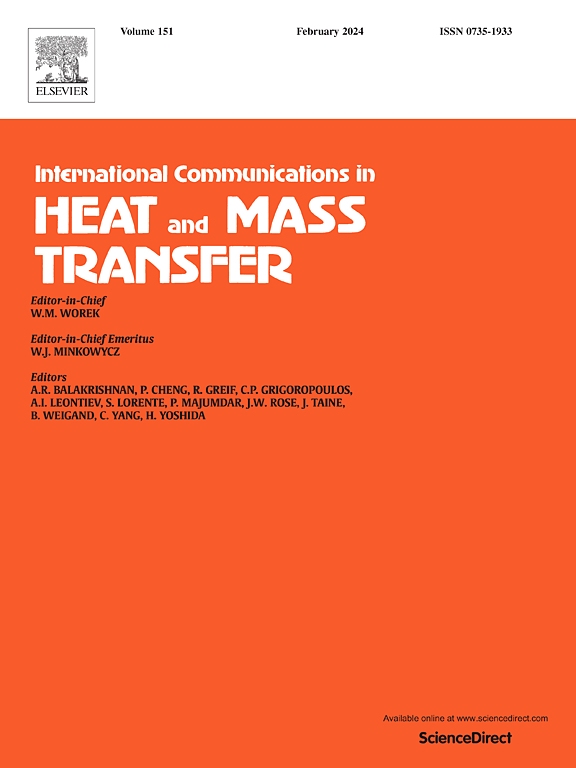Molecular dynamics simulation of reinforced silica aerogel with a phase change material at different initial pressures
IF 6.4
2区 工程技术
Q1 MECHANICS
International Communications in Heat and Mass Transfer
Pub Date : 2025-04-05
DOI:10.1016/j.icheatmasstransfer.2025.108934
引用次数: 0
Abstract
Aerogel, the lightest known solid, has distinctive features that make it advantageous for aerospace and advanced materials applications. This study investigates the mechanical properties of silica aerogel supplemented with paraffin as a phase transition material, evaluating the effect of initial pressures ranging from 1 to 10 bar. Molecular dynamics simulations are utilized to explore changes in stress-strain behavior, ultimate strength, and Young's modulus to assess structural responses in a variety of conditions. The equilibration procedure resulted in temperature stabilization at 300 K and potential energy convergence at −1500.789 eV, hence demonstrating system stability. As the initial pressure escalated from 1 to 5 bar, both ultimate strength and Young's modulus diminished from 620.32 MPa and 1777.53 MPa to 538.31 MPa and 1188.13 MPa, respectively. This reduction was ascribed to diminished atomic cohesion and heightened particle oscillation. Nonetheless, elevating the pressure from 5 to 10 bar altered this tendency, resulting in ultimate strength and Young's modulus increasing to 563.23 MPa and 1316.39 MPa, respectively, indicating enhanced mechanical stability. The results indicate that adjusting the initial pressure served as a method to regulate the mechanical strength of aerogel, presenting significant advantages for industries necessitating lightweight, robust materials. The work enhanced existing knowledge by clarifying the intricate function of initial pressure in maximizing the structural integrity of reinforced aerogels, surpassing earlier static reinforcing techniques.
求助全文
约1分钟内获得全文
求助全文
来源期刊
CiteScore
11.00
自引率
10.00%
发文量
648
审稿时长
32 days
期刊介绍:
International Communications in Heat and Mass Transfer serves as a world forum for the rapid dissemination of new ideas, new measurement techniques, preliminary findings of ongoing investigations, discussions, and criticisms in the field of heat and mass transfer. Two types of manuscript will be considered for publication: communications (short reports of new work or discussions of work which has already been published) and summaries (abstracts of reports, theses or manuscripts which are too long for publication in full). Together with its companion publication, International Journal of Heat and Mass Transfer, with which it shares the same Board of Editors, this journal is read by research workers and engineers throughout the world.

 求助内容:
求助内容: 应助结果提醒方式:
应助结果提醒方式:


